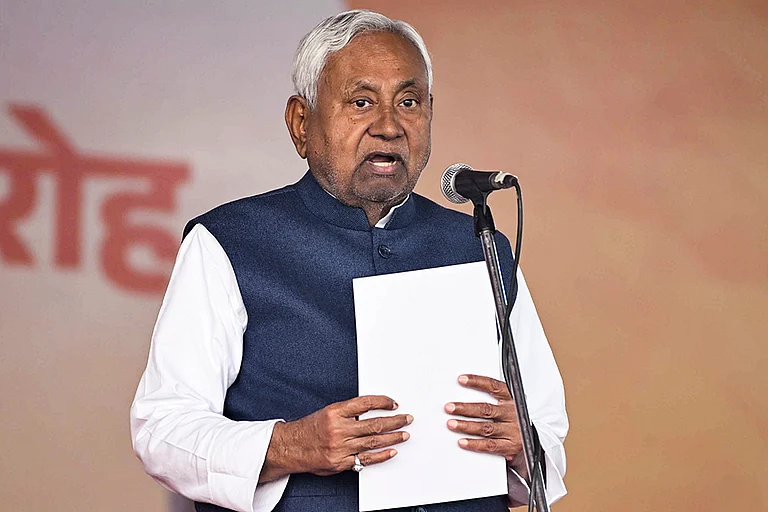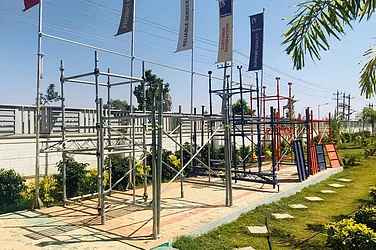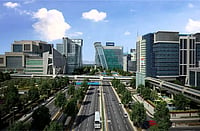Despite fiscal constraints, Nitish Kumar’s double-engine government in Bihar, backed by financial support from the Centre, is set to pursue its poll agenda of infrastructure and urban development. The NDA aims to govern using its familiar winning formula of combining development with welfarism—an approach that helped it return to power by decisively defeating the opposition.
The BJP-Janata Dal United government in Bihar, during its previous tenure, focused on infrastructure and urban development. Over the past five years (FY21–FY25), Bihar's asset creation (including infrastructure, housing and real estate) spending was to the tune of INR 1.8–2 lakh crore. As most of the high-value large infrastructure projects were funded jointly by the state government, Union government and the central ministries and agencies, including the ministries of railways, highways and housing and urban affairs, besides public-private participation, the total value of asset creation was much higher.
In its previous term, the BJP-JD(U) government had undertaken big infrastructure projects like JP Ganga Path and Patna Metro Rail. JP Ganga Path, also known as the Marine Drive of Patna, is a 4-lane expressway that runs along the bank of the Ganga in Patna, serving as a major transport corridor to reduce traffic congestion along the riverfront. The first phase of the 32 km long Patna Metro, undertaken at the cost of INR 13,925 crore, was operationalised on October 7 last. The Metro line will be further extended in Phases 2, 3 and 4. Undertaking development of highways, industrial parks and upgradation/expansion of regional airports were the other infra-related initiatives. In September this year, 1,300 urban projects across 33 districts to upgrade roads, drainage, parks and civic facilities were inaugurated. These projects were executed by Bihar Urban Infra Development Corporation Limited and Patna Smart City Limited to modernise urban infrastructure. In a boost to health infrastructure, the Bihar government also rolled out a plan to set up medical colleges in seven districts.

Clearly, infrastructure and urban development to boost connectivity and promote ease of living was a major poll plank of the NDA. Even the NDA poll manifesto had a clear focus on infrastructure, real estate and housing. The manifesto guaranteed ease of living by promising to build 50 lakh new pucca houses, besides free electricity up to 125 units and free medical treatment of up to 5 lakhs for the poor. There was a significant emphasis on infrastructure development and connectivity to improve the quality of life of citizens. The construction of 7 new expressways, modernisation of 3,600 km of railway tracks, introduction of metro services in 4 new cities, plans for building a greenfield international airport near Patna and upgradation of Darbhanga, Purnia and Bhagalpur airports, creating 10 industrial parks and 100 MSME parks were the highlights of the manifesto. The development of a medicity and a medical college in every district was promised to improve and upgrade health infrastructure in the state. The manifesto also talked about opening mega skill centres in every district, together with setting up a mega tech city. The welfare measures for farmers, SC students and women were other prominent features of the manifesto.
For the new government in Bihar, to fulfill tall poll promises and carry out the agenda of infrastructure, real estate and housing, together with welfarism, poses a huge challenge for the debt-ridden state whose average capital outlay is around 35k crore. Considering that the GST collections of states, including Bihar, are far behind the revenues raised during pre-GST years, Bihar will be facing the fiscal challenge. The fiscal deficit of Bihar, which stood at 6% of GSDP in 2024–25, further increased to 7.8% by September 2025, narrowing the legroom for the government to manage fiscal sustainability. Bihar is already heavily dependent on central financing with the highest share (72%) of central funding, more than the largest state of Uttar Pradesh. In this fiscal scenario, Bihar will need additional financial support from the Centre, besides taking to the PPP route and loans to carry out its ambitious developmental plans and social welfare schemes.
Powered by Torbit Realty.

























